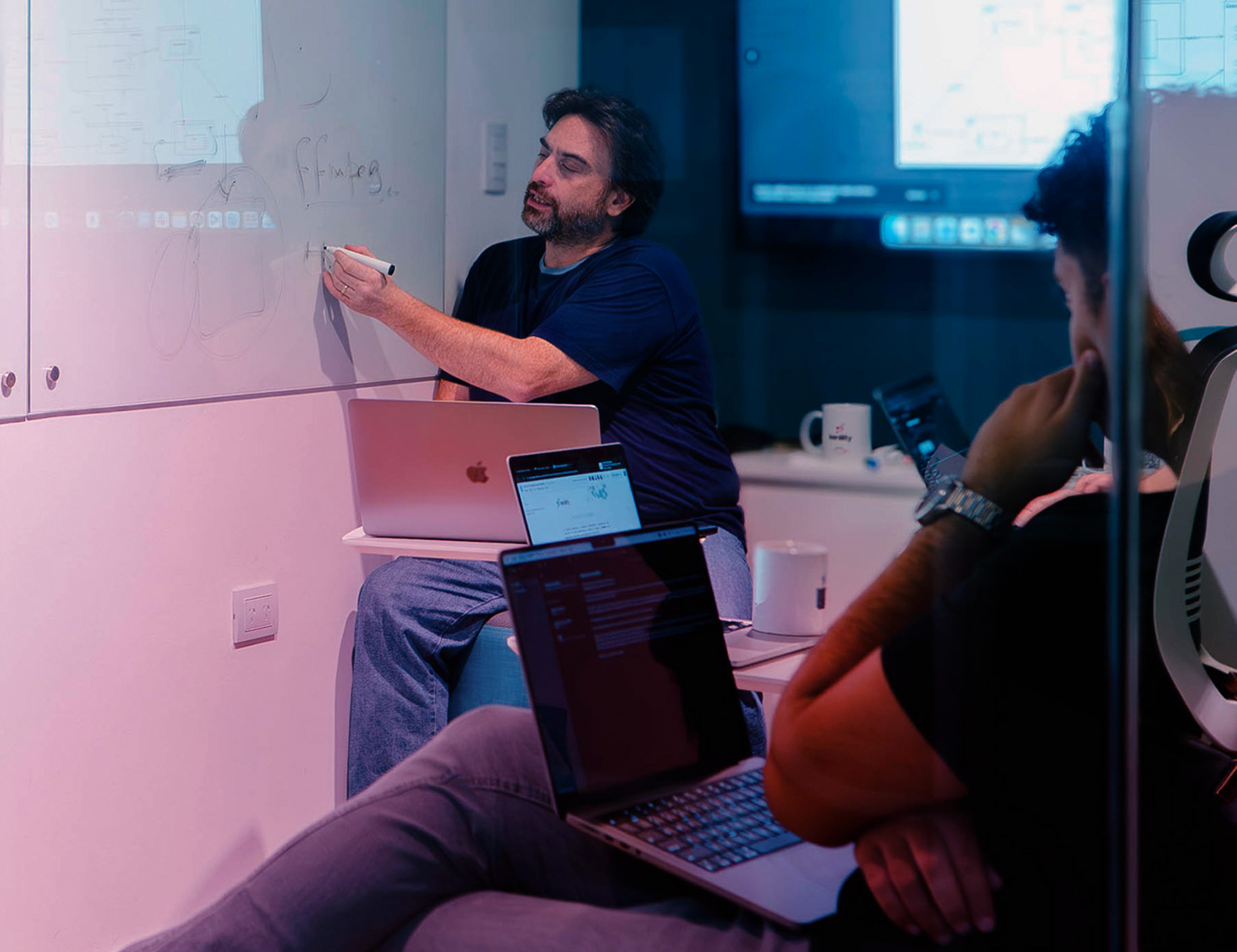Join our newsletter



Software development retention drives the innovation transformation of our current era. Engineers construct complete business infrastructure through the development of applications and systems as well as platforms that serve entire enterprises. The digital transformation importance among companies produces a severe challenge because organizations struggle to keep their skilled engineering professionals.
Their attention rates reached new heights in recent times as certain industries report more than 25–30% of developer departures per year. This high demand growth rate for software skills creates understandable hiring difficulties. The predicted substantial growth of software developer positions surpasses the national average occupation growth projections so it leads to labor shortages and elevated market competition. Organizations try to hire employees quickly but developers move fast between positions after understanding their market value is rising quickly.
High employee turnover beyond causing inconvenience leads to major financial effects which harm both a company's monetary status and its strategic output. The costs span multiple dimensions:
Recruitment and Onboarding
When developers with high value choose to depart, recruiters start an urgent hunt for candidates which involves candidate identification screening followed by interviews. Each engineer that a firm hires typically results in hiring expenses exceeding 10,000 dollars. New hires need more than an HR checklist to become operational since they need proper time to explore codebases and tools and adapt to team dynamics. A substitute developer's full operational effectiveness often takes between months to numerous weeks to reach optimal performance.
Knowledge Drain
Software engineers maintain essential inner knowledge within their institution. Engineers possess detailed knowledge about system logic as well as comprehension of design choices while maintaining expertise in reliable system patterns. The departure of employees results in the loss of important tacit knowledge that produces delays and system bugs as well as prevents innovative opportunities from developing.
Lost Productivity
Disrupting development cycles is costly. Absent cause-based employee departures cause existing team members to reshuffle their responsibilities while requiring senior engineers to guide and teach the new employees. Work projects become delayed while workers' motivation decreases leading to significant loss of project speed. The continuous departure of employees ultimately results in market opportunities going unanswered together with dissatisfied customers.
Cultural Impact
Rising employee turnover produces workplace doubts in remaining employees about their need to leave. Constant employee departures cause damage to team unity and exhaust personnel through burnout while making it more difficult to recruit replacement talent due to organization instability perceptions.
In this environment, focusing purely on recruitment volume is no longer enough. Companies that want to thrive in a highly competitive digital economy must rethink every aspect of their talent strategy, from how they identify and onboard developers to how they foster growth, culture, and engagement. Critically, many organizations are discovering that remote talent—and nearshoring in particular—can be an integral part of improving retention and building more resilient engineering teams.
Most organizations recognize that hiring and retaining top-notch software developers is mission-critical. Yet traditional retention models often fall short. The reasons are multifaceted:
Salary Wars Aren’t Enough
When developer attrition hit alarming levels, many companies doubled down on compensation packages to lure or retain talent. While competitive pay and bonuses are essential, money alone seldom ensures long-term loyalty. Today’s developers consider factors such as work flexibility, career path, and personal growth opportunities equally—if not more—important. Organizations that rely solely on salary to keep developers engaged are discovering that these tactics have diminishing returns in a seller’s market, where the best talent receives multiple offers.
Burnout and Overwork
The surge in digital transformation projects often places engineers under tremendous pressure. Looming deadlines, tight budgets, and ever-changing requirements can cause chronic overwork. This environment fuels burnout: one study by Deloitte reported that 77% of professionals have experienced burnout at their current job. For developers, extended sprints, weekend work, and the expectation to be “always on” can rapidly diminish job satisfaction. Burned-out employees are more likely to leave in search of a healthier work environment.
Lack of Career Growth
Developers thrive on learning. Workers desire to discover emerging programming languages and resolve difficult problems while having visible career progression. Engineers lose motivation fast since their daily responsibilities mainly consist of monotonous maintenance work and continuous repetition of codes. Career stagnancy creates intensified professional dissatisfaction for workers. A basic lack of mentorship, leadership development, and exposure to innovative projects creates little reason for engineers to remain in their current positions.
Company Culture Disconnect
Managers and HR teams traditionally develop workplace spirit through direct employee contact together with held office events and organizational benefits such as catered meals and gym facilities. The increasing shift toward remote and hybrid work models creates challenges for organizations to establish shared workplace communities because they cannot duplicate in-person interactions and meaning-based connections. Remote developers who join the team usually lack a clear understanding of the organizational values that guide the company's culture. Without active integration of remote engineers into the organization, open communication channels, and team cohesion, maintenance staff can easily feel unacknowledged which leads them to leave.
Flexibility as a Retention Tool
Remote work has taught the world that developers appreciate the combination of independence and adaptability in their jobs. The past typical draws of corporate workplaces featuring foosball tables and free food no longer entice developers as they did in the past. Today professionals choose work environments without physical limitations because they want scheduling autonomy and effective work-life balance. The provision of remote or nearshore solutions displays trust in staff decisions regarding working style while raising employee loyalty and satisfaction levels.
Converting from traditional workplace engineering to decentralized operations requires more than supplying employees with computers and video-conferencing equipment. The following strategic methods outline steps for successfully attracting developing and retaining telecommuting developers in the future:
Onboarding That Builds Loyalty
The successful implementation of an onboarding process creates trust and connection between team members. Consider these practices:
Introduce new employees to their projects through detailed information about team processes linked with organizational values. Recruits benefit from virtual welcome meetings combined with matchup programs between experienced teammates who make sure newcomers get their first three weeks off to a successful start.
A brief overview of organizational best practices together with company history and core values should be provided to nearshore remote engineers. Leadership should enable open Q&A opportunities during the first days to create immediate connections with new team members.
Goals must be clear along with specific milestones because nothing stands more challenging to employees than encountering ambiguities. The establishment of roles and responsibilities together with clear success metrics should occur at the beginning of projects. Business developers must gain a precise understanding of the direct connection between their work and overall company goals.
Fostering a Strong Remote Culture
A step in the right direction with software development retention means understanding a fundamental fact. A workspace environment is only nurtured when there is an effort to create a shared intention. This serves as the primary requirement for distributed teams and their operations.
The platform of asynchronous collaboration works best for distant teamwork through tools such as Slack Trello Jira or Confluence to help connect team members during different times. The communication system should integrate session-based video calls with document-sharing and messaging capabilities in a combined mode.
Openness in business operations combined with employee self-direction through shared information about corporate developments and project progress and performance results. Openness throughout the workplace enables developers to make well-informed choices and feel included because they have ownership over results.
The collaboration among teams increases through Team Bonding Activities that include Virtual coffee breaks combined with online hackathons along with cross-border cultural exchange sessions. Before budgetary and safety considerations teams must have the opportunity to gather in person for meetups and retreats that will strengthen their collective bond.
The struggle to maintain software development retention is real. Digital transformation speedup across various industries will keep developers as essential corporate innovators throughout the future. Organizations face obstacles to their competitiveness in the long run because of their high employee turnover rates.
Remote work that organizations initially treated as an advantage has evolved into a necessary business plan. The ability for businesses to transcend physical boundaries enables them to recruit talent with distinctive capabilities throughout various locations and uphold the modern work preferences of engineers. The nearshoring model assists businesses in combining the expense advantages of outsourcing with the team camaraderie of internal teams thus offering solutions to offshore collaboration obstacles.
Competitor companies that embrace innovative technological changes along with changing talent demographics successfully retain their best developers while companies that lag will lose talent to progressive competitors. Organizations that implement distributed teams combined with cultural commitment and continuous education programs will convert employee retention from an endless battle into an organizational strength.
Our team provides AI solutions combined with strategic nearshoring to assist you in recruiting premium engineering personnel regardless of their physical location. We implement an agile yet rigorous selection process for each developer to achieve productivity, and commitment to organizational success.
Are you ready to revolutionize your software development retention while maximizing the benefits across your organization?
Discover our nearshoring solutions by contacting us at sales@kenility.com to build an engineering team that combines AI expertise with top-tier performance.